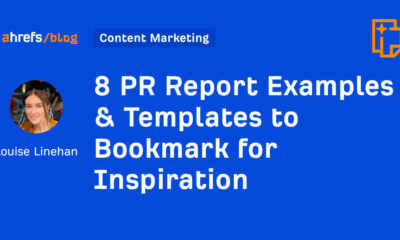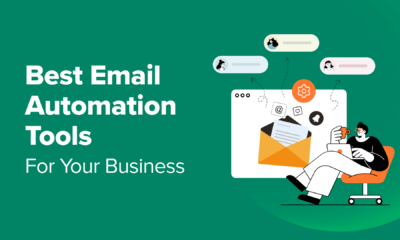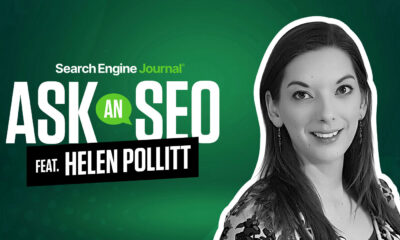MARKETING
28 Best Email Newsletter Templates and Resources to Download Right Now

If you had to guess, how many email newsletters do you think you’re subscribed to? Ten? Twenty? Fifty?
To be honest, I’ve lost count — and I know I’m not alone. Email marketers have a lot to compete within their subscribers’ inboxes. That’s why a solid newsletter template is crucial to designing an email that people are encouraged to click through.
Free Email Newsletter Templates
- HubSpot Template Marketplace – Marketing Hub
- Announcements by Litmus
- ConvertKit
- ZURB Ink
- Flodesk
- 99designs
- Moonsend
- Campaign Monitor
- MailerLite
- Constant Contact
- Themezy
- Drip
- Material Design by Paul Goddard
- Briar by SliceJack
- EmailOctopus
If done well, email newsletters can do wonders to help you build an engaged subscriber base, keep your business top-of-mind, and nurture leads that are already making their way down the funnel.
However, “done well” means more than just serving up great content. In fact, an often overlooked component of the newsletter creation process is the design.
Don’t have time to build out a custom template from scratch? We’ve scoured the internet for the best resources for email newsletter templates and compiled them below. Many of the templates have also been pre-tested for compatibility with major email service providers (ESPs) via Litmus — a web service that allows you to preview the way your email will look on different email clients and devices.
Once you find one you like, download the template and customize it to fit your needs.
1. HubSpot

Price: Free & paid options available
If you’re a Marketing Hub user, HubSpot offers a great collection of email templates you can use on your next marketing email. No need to log out and search for a template in another marketplace; these templates are available to you right within the tool.
Once you choose a template, you can start using it immediately right in HubSpot — no HTML or CSS required.
2. Announcement by Litmus

Price: Free
Litmus offers a free email template collection — from newsletter templates to account management templates. This marketing-specific theme — simply referred to as “Announcement” — is modern and sleek, while still being kind of fun. All of the templates have been tested with Litmus.
While you are required to create a Litmus account with your email address to access the templates, the templates themselves are free of charge.
3. ConvertKit
 Price: Free
Price: Free
ConvertKit is a creative email template platform that’s a great option for bloggers, course creators, and more. ConvertKit comes with email automation tools, signup forms, and many more integrations.
To use ConvertKit’s email newsletter templates, you’ll need to sign up for a plan, but the good news is that they offer both free and pro subscriptions. While this platform is more on the creative side, their vast array of templates and tool integrations will help businesses in any industry upgrade their email newsletter.
4. ZURB Ink
 Price: Free
Price: Free
ZURB Studios has five responsive email templates available for free, including the newsletter one below. It has a great, fluid layout you can customize with your own colors, images, and wording.
If you want to see how each template looks on different email clients, you can check out screenshots from each template’s email client tests, which are available on the site. These layouts are optimized for most email clients — except for outdated versions of Outlook.
The template kit comes with a separate CSS stylesheet and HTML file to ease the editing process. Most email code editors will place the CSS inline with the HTML itself after both are uploaded separately. If you’re going to add images to your newsletter, keep in mind that you’ll have to create a separate folder and compress it with the CSS stylesheet before uploading.
Pro tip: Once you’ve selected a template, use HubSpot’s free email marketing software to craft your message and send a newsletter out to the world!
5. Flodesk

Price: Free for 30 days
Flodesk is an upcoming email newsletter design platform with over 3,000 email templates and designs to enhance your email marketing. Aside from giving you access to a vast array of templates, Flodesk lets you connect your ecommerce site to help with automation and analytics.
Another benefit of Flodesk is that its subscription price ($38/month) is a flat fee. So, whether you’re sending 200 or 2,000 emails, you’ll pay the same price, and you’ll never have to upgrade your subscription to get all of the perks.
6. 99designs

Price: Free
99designs is a growing online community and collaboration platform for designers and small businesses, and they have a great designer blog and business blog. As a free offering to their blog readers, they released a set of 45 free email templates — perfect for newsletters, promotional messages, and personalized responses. All of the templates are fully responsive and compatible with all major email clients.
7. Moosend
Price: Free for 30 days
Moosend is an email marketing platform that makes it easy to design custom emails with a drag-and-drop editor and over 70 premade templates. Moosend also tracks analytics and sends personalized automated emails to subscribers based on their interest and behavior. If you’re interested in landing pages and subscription templates, it includes those as well.
Moosend analyzes your subscriber base to help with the success of your business. Just like Flodesk, Moosend lets you connect your ecommerce site to attract more subscribers and store all information in one place. Moosend is free for the first 30 days, and then you would have to upgrade to pro status for $9/month.
8. Campaign Monitor
Price: Free
Campaign Monitor is another free email newsletter template and marketing platform. With a variety of email templates for newsletters, welcome emails, and promotional campaigns, Campaign Monitor makes designing emails easy. Campaign Monitor also compiles your analytics and tracks when emails are sent, delivered, and opened.
For many businesses, email marketing needs to connect to their website or ecommerce site, and Campaign Monitor does just that. Campaign Monitor has it all when it comes to templates and helps you maximize your sales by staying on-brand and creating a seamless customer experience. Campaign Monitor is only free for 30 days, but plans start as low as $9/month.
9. MailerLite
Price: Free
MailerLite offers various newsletter templates for promotions, announcements, and more. With its trendy newsletter designs, MailerLite makes sure its customers stay up to date while sending newsletters. You can customize the templates using either an HTML editor or drag-and-drop editor, and connect your MailerLite account to your website. MailerLite also has features where you can grow your audience with landing pages, subscription forms, and pop-ups.
MailerLite provides data insights as well. The advantage of MailerLite is that they will send your emails based on your customers’ time zones, allowing you to send emails that can get the most opens. MailerLite also provides A/B split testing tools so you can identify the best version of every email you send.
10. Constant Contact
 Price: $9.99 a month
Price: $9.99 a month
Do you run a non-profit? If so, this is the newsletter tool specifically for you. Constant Contact is an email newsletter builder that offers specific templates to help nonprofits raise funds and market their missions. With hundreds of templates to choose from, you’ll be sure to find a design based on the template you need and what type of nonprofit you run.
The great thing about Constant Contact is the business analytics. While using the platform, you can see when emails are sent, delivered, opened, and shared. You will also be able to see top trends and send personalized emails to your clients.
Constant Contact also connects with your social media profiles, includes sign-up forms, and offers text message marketing tools. Contacting your non-profit subscribers via text message can be a great advantage because people check their emails but people check their text messages more. While Constant Contact is not free, its features more than make up for it. You can start at the basic subscription ($9.99/month) or upgrade to a pro account ($45/month) to unlock all the features.
11. Themezy
Price: Free
Download sixteen free HTML, CSS, and PSD customizable email templates on Themezy. You don’t have to submit an email address to get started, and there are various color schemes and layouts to meet your email list’s needs.
Plus, they’re designed to be responsive across devices to ensure that your subscribers can read your newsletter.
12. Drip
 Price: Free
Price: Free
Drip offers email marketing and SMS marketing for ecommerce brands. Drip is a new platform that lets you set up email marketing campaigns through hundreds of customizable templates. Along with their email newsletter templates, Drip offers excellent customer relations management tools, data analytics, and trend trackers so thorough that you can see how many of your customers bought red shoes within the last year. As a result, you’ll be able to better market yourself through your campaigns. Drip also has integrations that you can connect to your WordPress website, so you can use Drip without being on Drip.
Drip lets you start with a free 14-day trial, and the cost of your subscription will depend on your number of contacts. For up to 500 contacts, it’s $19/month, and the price goes up from there. Drip is beneficial to creators and ecommerce businesses because of the various marketing and analytical tools it offers. From email marketing to SMS marketing campaigns, Drip lets you effectively engage your customers.
13. MailPortfolio by SliceJack
Price: Free
If your marketing strategy is heavily reliant on visuals, MailPortfolio is perfect for you. It’s a minimalist template with no added background distractions. While it was made for those looking to display personal creative portfolios, it’s also suitable for larger businesses and organizations.
The template has been tested with Litmus, is responsive, and works perfectly on all email clients. (Note: older versions of Outlook may not render all of the fonts, and the Android Gmail app is not fully supported.)
14. Material Design by Paul Goddard

Price: Free
This template is based on Google’s Material Design and has a robotic-retro feel. It is perfect for sending out multi-purpose newsletters featuring new products, events, and other announcements at the same time. This theme isn’t made for a specific industry, but the template is well-fitting for businesses looking for a timeless, technological look.
Material Design has been tested on Litmus, is compatible with all major ESPs, and is responsive. While its main attraction is its unique design, this theme download also includes customizable HTML files.
15. Briar by SliceJack
 Price: Free
Price: Free
Briar is the perfect newsletter template for marketers looking for a fluid, minimalist design featuring images and text that don’t overshadow each other. It’s perfect for sending out regular newsletters, and you can customize the Inline CSS files.
The template has been tested with Litmus and works with all major email service providers (ESPs). However, some older versions of Outlook may not render all Google fonts. Also, the Android Gmail app is not fully supported.
16. EmailOctopus
Price: Free
EmailOctopus is a marketing service that launched a series of 11 templates that can be used to create newsletters for a variety of industries. Whether you’re marketing for a fashion brand or a medical supply company, one of the templates will fit your needs.
The templates have the “typical” newsletter look, but allow you to add product announcements, feature stories, and CTAs wherever you’d like. All of the templates can be modified through any WYSIWYG editor, and the downloads include the HTML files.
These templates have been tested through Litmus across all major ESPs and are responsive to all screen sizes.
Best Places to Find Email Newsletter Templates
- Feshto
- Bee
- Themeforest
- HubSpot
- Mailchimp
- Active Campaign
- Canva
- Adobe Express
- CakeMail
- MJML
- Microsoft Office Template
- Template Forest
1. Feshto by Liramail
 Price: $29-25/template
Price: $29-25/template
Feshto is an email bundle that helps ecommerce companies feature products in their newsletters and share testimonials from satisfied customers. It comes with a weekly digest module, which is their version of a newsletter.
The module features a chic, clean design that ensures your images and copy are not distracting from the other. You can choose from their various layouts, such as “Weekly Digest,” “City Story,” and “Blog Article.”
As mentioned, these templates are perfect for product features and testimonials from satisfied customers. While the default themes are black and white, you can make edits in your preferred WYSIWYG editor.
Feshto’s templates are responsive and compatible with all major ESPs.
2. Bee

Price: Free – $15
Bee is an HTML template tool with thousands of free templates for any professional to use. With a variety of categories, Bee gives you a template for everything, but it also has tools that allow you to build your own email newsletters. The drag-and-drop feature allows you to pick and choose the elements that best suit your personal needs. The versatility also allows you to customize every email you send, then download it as an HTML so you can send your emails to anyone from anywhere. Another great advantage of Bee is that it allows you to save various content from different emails that can then be used in other templates. No need to start from scratch.
With Bee, you do have a 14-day free trial and plenty of free templates to use if you do not want to sign up for an account. If you would like an account, Bee offers different versions of their Pro account depending on the field you are in. For instance, they have Pro Freelancers, Pro Team, Pro Agency, Pro Enterprise, and Pro Nonprofit; Pro Freelancer starts at $15 a month.
3. ThemeForest
 Price: $6-23/template
Price: $6-23/template
ThemeForest is an awesome resource for email templates if you have some budget to spend. Their library has over 460 newsletter templates in all different colors, styles, and themes. The templates are rated using a four-star system, and you can filter by rating, price, recency, and popularity.
Here’s one example from its library:
Market – Responsive Newsletter with Template Builder ($19)
This template has eight prebuilt layouts, 24 color variations, 24 full-layered PSD files, and more. Plus, it’s supported by all major email clients.
4. HubSpot Email Copy Templates
 Price: Free
Price: Free
If you’re looking for written templates you can input into your email tool, these are the templates for you.
HubSpot offers free email templates that empower you to market and sell your business over email without writing a single line from scratch. These free email template downloads save you time and money.
The templates can be downloaded right to your computer and can be used by any type of business.
5. Mailchimp
 Price: Free – $200 per month
Price: Free – $200 per month
Mailchimp is an all-in-one marketing platform that helps small and large businesses scale and grow their business through marketing techniques and automations. Mailchimp has a variety of pre-made templates in their email newsletter tool. Aside from giving you over 100 designs to choose from, Mailchimp also gives you the option to download their Email Blueprints, which allows you to customize HTML templates.
6. ActiveCampaign
Price: Free – $258 a month
ActiveCampaign is a full-service email provider that offers email marketing automation and CRM tools. Its library of newsletter templates allow you to create conversion-optimized, visually impactful emails without touching a single line of code.
ActiveCampaign is free, but you will need to sign up for an account to use and view their email templates. You can use the majority of their templates for free, but if you want some customization, you’ll want to upgrade to a paid account.
7. Canva
 Price: Free – 20.00 per month
Price: Free – 20.00 per month
Canva is an online graphics software that provides free templates for a multitude of things like Instagram posts, resumes, and email newsletters. Canva is a great tool because you can find free templates for specific niches like fashion, tech, culinary, and many more. While there is a paid tier, many of the premade templates are free, and you can add your own customizations without having to pay extra.
8. Adobe Express

Price: Single Application: $33.99 a month | Full Bundle: $79.99 a month
Adobe Express, formerly known as Adobe Spark, is another browser-based graphic design tool that has a multitude of templates and functions to help any company create a newsletter. Similar to Canva, Adobe offers premade templates based on industry categories like photography, architecture, and fashion. To access the templates, you must sign up for an account with Adobe.
9. CakeMail
Price: Free – $200.00 per month
CakeMail is an email marketing tool that includes user-friendly automation tools and allows you to create customizable emails for any person, occasion, and niche. CakeMail offers over 50 free editable email templates that are divided into smaller niche categories. One of the advantages of CakeMail is that you do not have to sign up to use the email templates provided, but if you would like to see how your email campaigns are performing, you can register for an account.
10. MJML
Price: Free
MJML is an HTML-based email designer. They have a wide variety of free templates that are customized for the type of email marketing your company is trying to do, including newsletters, promotions, and seasonal emails. Once you find a template that you like, MJML allows you to see the template and the HTML code in real-time as you edit it. Because MJML is HTML-based, you will have to copy your code and transfer it to the HTML editor in an email marketing service to use the template.
11. TemplateMonster
Price: Varies
TemplateMonster offers a variety of email newsletter templates, such as the Useful Notifications newsletter template pictured below, all of which are available for relatively low prices. Their templates are clean, customizable, and easy to use, and they’re compatible with most major email clients, such as Gmail and Yahoo Mail.
Additionally, the templates come with built-in responsive layouts for screen adaptability, like the ones on the mobile phone pictured below, and PSD sources for a litany of customization options.
12. Microsoft Office Templates
Price: Free & Paid Email Templates
Microsoft Office has a variety of tools, including extensive templates that can be used for Microsoft Word, Excel, and PowerPoint. You can further narrow down your templates depending on the category of your business. While Microsoft does offer free templates, they are limited. For use of the paid templates, you will have to download Microsoft 365 to use them.
Get Started on Your Email Marketing Newsletter
Ready to draft your next email newsletter campaign? Download one of the excellent newsletter templates from the template galleries and landing pages above. Then, grab your free guide below for creating an email newsletter your audience will want to engage with.
Editor’s Note: The post was originally published in December 2018 but was updated for comprehensiveness in December 2019.
Source link
































You must be logged in to post a comment Login